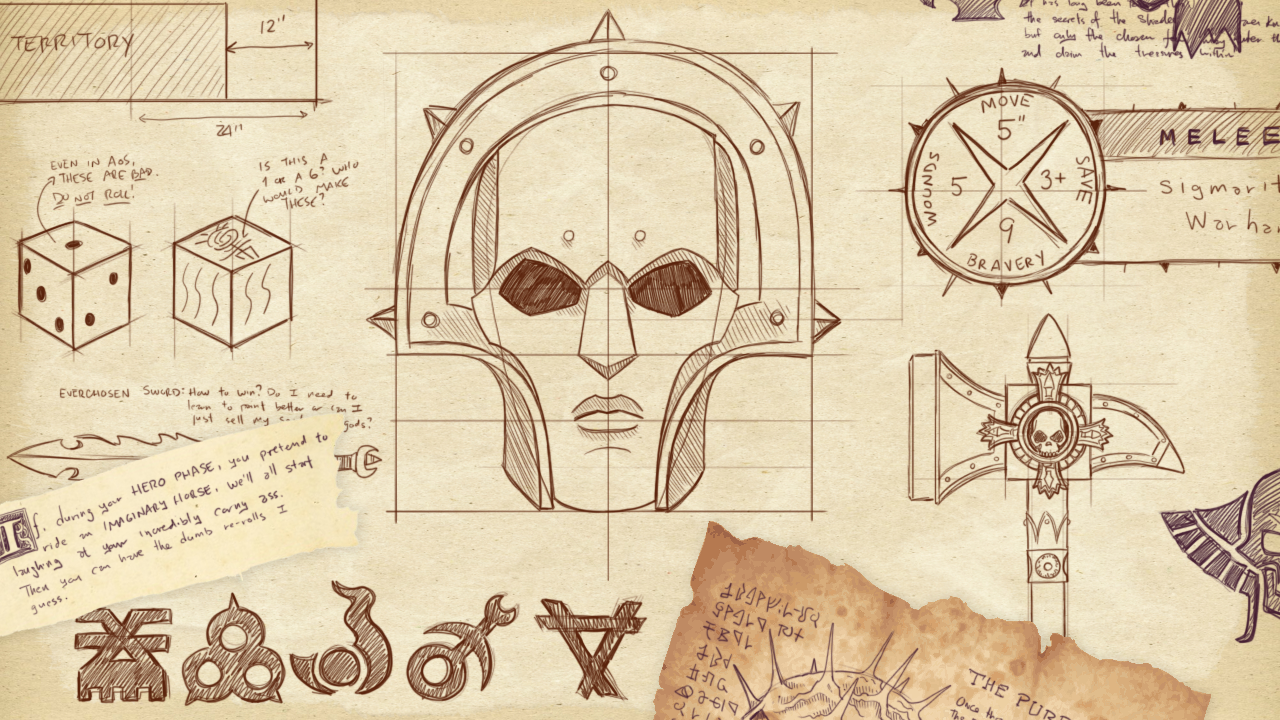Welcome to Warhammer: Age of Sigmar, the dorkier, less popular sibling to Warhammer 40,000. Age of Sigmar was maligned amongst the community for a while, primarily for the crimes of killing off the Warhammer Fantasy Battles universe (and taking two armies down with it), replacing its Old World with a setting that was vague and lacked any real flavor, and launching with some head-scratchingly bad rules.
But this is not about any of that. After gradually taking steps to improve the game through 1st edition, GW pushed a huge relaunch by way of a 2nd edition that has gotten the game to a pretty good place. The armies have been fleshed out and given rules and the setting is being explored more. The game is in a bit of a transitional period, where mostly everything is up to date but sometimes old books still apply, sometimes in situations you wouldn’t expect. It’s complicated to know where to start even if the actual game and list building are simpler than 40k.
This is where I come in.
But first, what is Age of Sigmar?
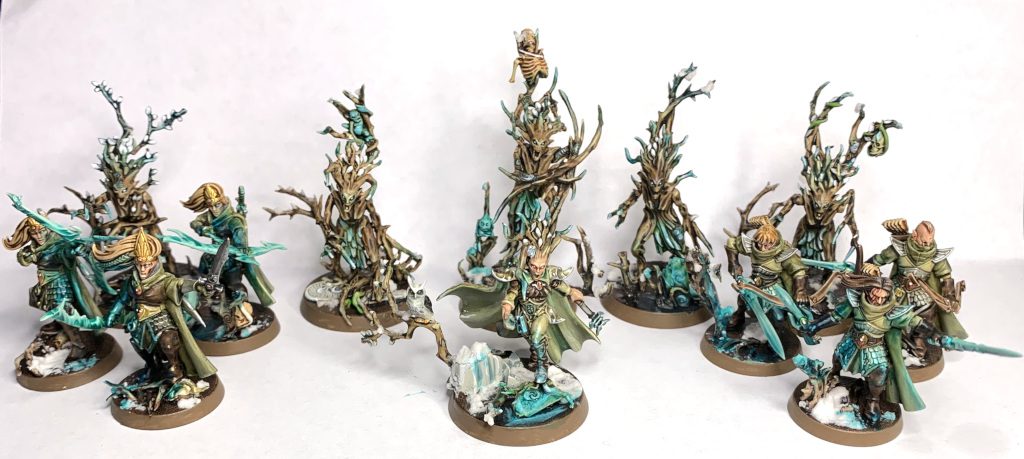
Warhammer Fantasy Battles released in 1981 and was the precursor to the now much more famous Warhammer 40,000. It was the Fantasy Wargame, with humans, elves, dwarves and vampires fighting it out in a gritty fantasy world. The setting was a mish-mash of Tolkien and various other fantasy stories combined to make something original. It spawned a wide range of books, computer games, and a particularly famous tabletop RPG.
Then it all went to shit.
In 2015, for reasons still not fully known, Games Workshop began The End Times, a supplement where every major character and location was involved (most of them died). Without getting too deep into the specifics, the bad guys won, and they won hard. The Chaos Gods took over the world and the God King Sigmar, who was the patron deity for most humans in the setting, fell into a slumber and woke up a millenia later to find the world a mess. He made some pacts with other deities and endeavoured to fight back against Chaos. After gaining some ground these, alliances fell apart and now multiple factions are cooperating and competing to secure control over the 8 planes of existence (known as the Mortal Realms). This signalled the retirement of support for the old Warhammer Fantasy game and the launch of a new game: Warhammer: Age of Sigmar.
If you’re coming in fresh, you will likely hear a lot of negative things about Age of Sigmar. To say the release was not well-handle is putting it lightly. The rules were a complete shift from old Fantasy, taking a rank-and-flank unit block game and turning it into more of a free-flowing skirmish. GW’s selling point was that the core rules were only 8 pages, which was true, but they were also very shallow. White Dwarf published some very asinine rules during the End Times (Empire players could gain bonuses for having a bigger moustache than their opponent, or Bretonnians for pretending to ride a horse. Seriously it was weird as hell), which continued to taint the game’s perception. There weren’t even any points and now all your models were meant to be on round bases rather than square ones. GW basically told people to throw down models and take a guess if they looked balanced or not. The setting didn’t help either; they had taken one of tabletop gaming’s most beloved worlds, destroyed it, and then gave people a sandbox with very little description of what any of it was like. Unsurprisingly it had trouble hooking people.
After 3 years of incremental improvements upon the game such as adding points, releasing Codexes (now called Battletomes) for specific factions to add some customization options, and expanding upon the lore, GW announced a major relaunch to the game and a full rulebook was released in 2018. It showed a commitment to fixing the game, and expanded the fluff which people previously found lacking. What once was a very “sandboxy” setting with 8 vaguely defined planes now had places and people in it. The setting has a very epic feel to it, so if you never get tired of larger than life heroes and gods fighting it out in an over the top fantasy setting, it’ll probably appeal to you. Age of Sigmar is a fantastic game that has seen a major reversal from its difficult beginnings and is still growing.
Why should I play this game?

There are a lot of reasons! As stated above, the game has really come into its own with the launch of the 2nd edition core rulebook. Many more people are playing the game so it sees a lot of support. The rules have been overhauled drastically, fixing a lot of balance issues and speeding up gameplay. It has some absolutely gorgeous models and tons of factions to play with varying playstyles; even within a single faction, you have multiple ways of approaching a match. The other reasons are going to differ from person to person but there’s a few particular groups that this game would appeal to:
You’ve never played a tabletop wargame before: Age of Sigmar is a pretty simple wargame to play, comparatively speaking. It moves fast and play doesn’t get bogged down in minutiae. This makes it perfect for newcomers who want to get into the game, along with the high number of players meaning you’ll undoubtedly find someone to teach and play with at a game store.
You played Warhammer Fantasy but dropped off: This one probably stings a little. The End Times were hard on people, but if you give it a chance you can find a really good game here. You won’t need to invest all that much, since the vast majority of models are still compatible with the game in competitive play. Unfortunately, Tomb Kings and Brettonia are gone, but there are warscrolls for all of these units. Even if they’re not playable in matched play, you can experiment with them to get an idea of how the game plays.
You’re coming from Warhammer 40,000: As a 40k player it’s pretty hard not to notice Age of Sigmar, with its models crowding up the game store next to your own and all. If you like 8th edition 40k, you’ll feel at home here. Age of Sigmar at launch was a sort of beta test for 8th edition. The lessons learned from AoS’s disastrous launch were used to create 40k 8th edition, and the lessons learned from that were backported into the new Age of Sigmar.
In essence it’s a refinement of the gameplay, and the broad strokes of what you already know apply here just as easily, though there are some differences. Age of Sigmar has fewer ranged attacks; outside of a specific few, most armies have fewer shooting options and they don’t have nearly as many shots per model, so it’s a much more in your face and intimate game. Wounds roll over, so multi-wound weapons are more dangerous and combat tends to see a lot more casualties. Finally, the game seems more willing to experiment with more off the wall character rules (though not nearly to the extent as the stuff of End Times, which is probably for the best) which can lead to a more dynamic play experience.
What do I need to Get Started?
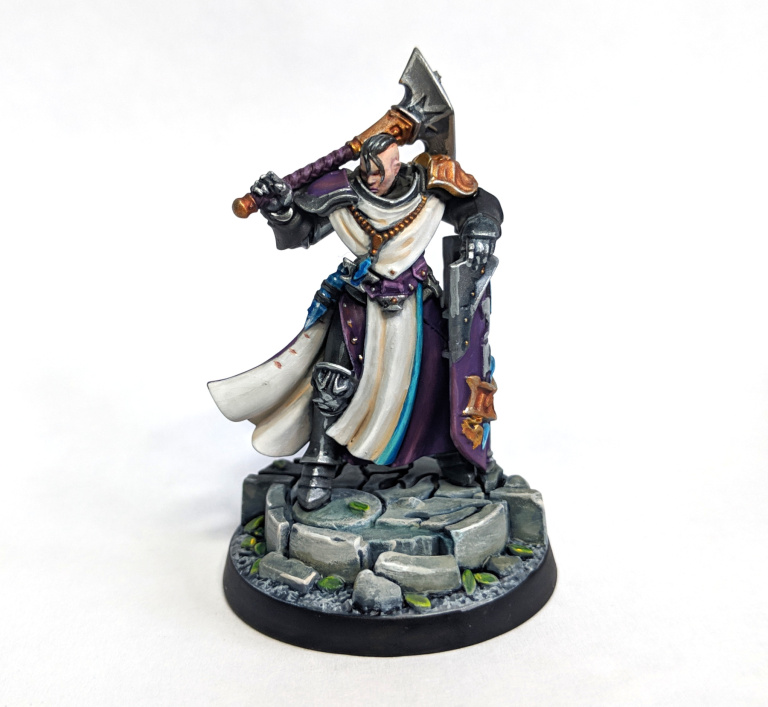
The bar to enter Age of Sigmar is a lot lower than 40k. If you search for the “Battle Rules” on Games Workshop’s Webstore you can get a pdf of the basic rules. These are all you need to throw down some models and play a game. It includes the step by step rules and a basic battleplan that amounts to “kill the other guy before he kills you”. As for the rules for your miniatures, that’s also a free download. If you find your miniature on the official Games Workshop store there will be a tab to download the war scroll (the game’s name for stat blocks) absolutely free, not even an account required! This honestly is not a bad way to play if you just want to buy a few models and see how the game works.
What do I actually need?
So where does the confusion come in? Knowing which models you can use is agonizingly difficult if you intend to play this game beyond throwing random models around. At launch the game was divided into 4 major factions: Order, Chaos, Destruction and Death. These still exist but playing just that gives you really limited bonuses. If you want to play seriously you will need to look at which armies GW has decided to officially support, which can be more difficult.
If you want an idea of where to start, I recommend checking out our Start Competing page. While there may not be finished articles for all of the armies just yet, looking at which ones are lined up can help figure out where best to focus your search on finding the plastic man dollies army that is right for you. You’re not strictly limited to these choices, but it definitely helps make the initial start a lot less confusing.
Once you’ve decided on an army, there’s a few more books you should really look into. While the free basic rules will get you through the turn to turn of the game you should seek out the Core Rules. These contain the same free rules along with artifacts, general traits and battleplans to help you customize your army and play a much wider variety of game types than “I punch you, you punch me”. It’s not technically essential but realistically you’re going to want it.
Next, you should get the most recent General’s Handbook. The General’s Handbook has the most current point values for all models in the game, most current game types, and rules for armies that don’t yet have their own battletome. A new edition gets released every June, so if you’re reading this in May it might be worth double checking a new one isn’t imminent before spending the money.
Finally, check if your army of choice has a Battletome. If it does, get it. Battletomes contain the warscrolls for all your units in one place, but you can get those as free PDFs. The important reason to have them is they contain Army Abilities, General Traits, Relics, Priest Blessings and Magic Spells relevant to your army. These are typically more powerful than the very generalized ones in the core rulebook and really help push an army’s individual strengths.
An optional but highly recommended addition is the Azyr app which you can get on Android or Apple devices. Unlike 40k, GW has an officially supported list builder app for a very low monthly fee, and also supply the web-based Warscroll Builder if you want a free option. Both create very clean print outs you can bring to your game so your opponent can see what you’re using.
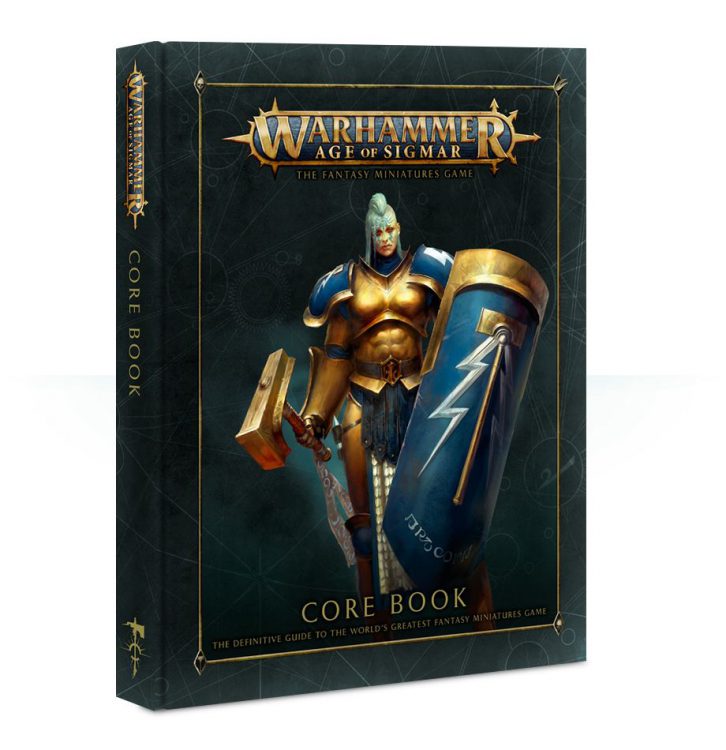
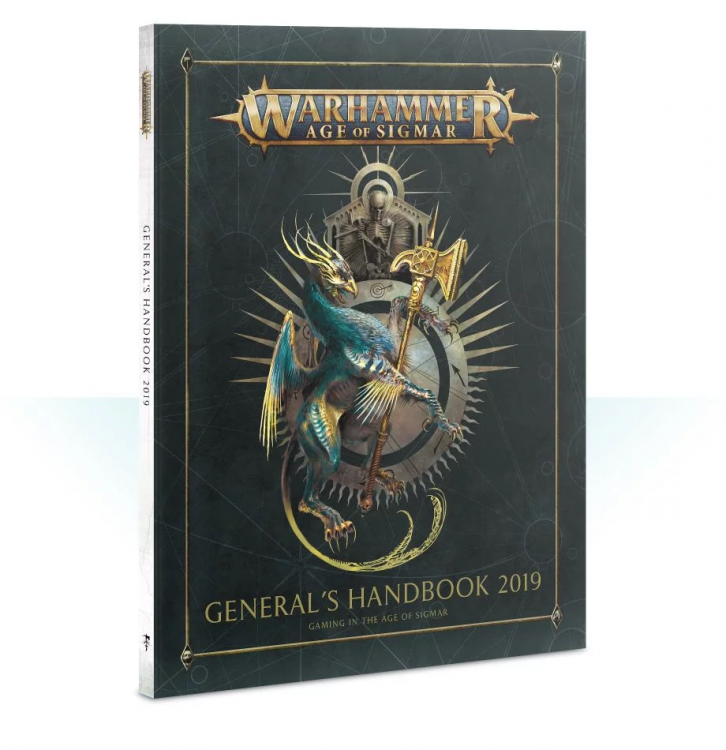
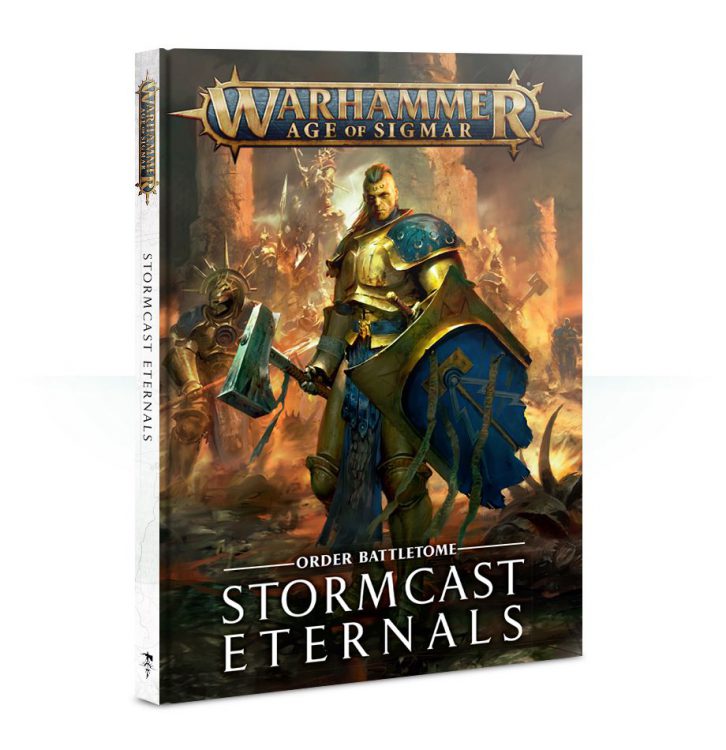
What are the game types I might encounter?
Age of Sigmar has 4 different game types which you will see referred to in the rules and the Azyr app when building lists. It’s important to agree with your opponent on the game type so you can bring the proper models and lists.
Open – Open is sort of a “anything goes” scenario. You throw down some models, ignore the rules on points and just start playing. It’s likely what you’ll do early on as you learn the game so you can get going on learning to move and fight while avoiding too much confusion, but in the long run people tend to prefer a little more structure.
Narrative – Narrative is a bit vague, but generally speaking it involves a pre-scripted scenario with special rules. Most of these come from Battletomes or the General’s Handbook and can be a fun diversion from time to time.
Matched – This is where the meat of the game is. Players agree on a preset points value, choose a game type and bring their armies. The point values most will use, and are provided specific support by GW are 1,000, 2,000 and 2,500, with variations of +/- 250 points for each one (e.g. 1,000 can become 750 or 1250). Most players will prefer to play this mode once you got your legs so it’s the goal you will be working toward.
Editor’s Note: 1500 not being on the above list is not an omission – for whatever reason, GW don’t encourage games of that size.
Meeting Engagements – A newer spinoff from matched play, released in the General’s Handbook 2019. Armies are limited to 1,000 points, and are split up into 3 separate groups at the start of the game which arrive on separate turns, which helps keep lower point games from being a slaughter. It’s a really solid game mode and a good way to learn when starting a new army, although the specific rules for deployment can seem very complicated to a first time player.
I read the rules and I got the goods!
Awesome! Finding a flesh and blood person who knows the game is the best way to go since you will be playing with those quite a bit. Check out your local gaming store/club, or their page on social media, and see if there’s someone willing to teach you as nothing beats an actual teacher. Alternatively, if you have a friend who has models but doesn’t know the game you both can fumble through it together!
Once you know the rules, shoot for a smaller game. 1,000 points with one leader and 2 or more battleline (these roles are outlined in the back of your Battletome or the General’s Handbook) is a good foundation for your army. 1,000 points is basically the bare minimum most will be willing to play short of a “learning game” – these games are often fast and brutal but you will learn how the game works mechanically.
Where do I go from here?

So you got the books, studied the rules and maybe even played a matched game or two. You might not understand all the rules and that’s ok! You’re off to a great start and hopefully you are beginning to get enough context to figure out which models to buy next and how to make your army bigger. Here’s a couple things you should look at doing:
- Study your Battletome: You likely only got to look at it briefly before being overwhelmed. Now that you have some context, go back and look what your options are. What are your Hero choices and what do they do? What units will really wreck your opponents face? What spells and artifacts will give you an edge?
- Look for Errata: The books aren’t perfect, sometimes mistakes or balance changes happen. On the Warhammer Community site you will find FAQs and Errata that change how certain rules work. This is especially important if you’re using an older battletome that hasn’t gotten an update yet, as the game is very different than it is now. So look for the errata for the core rulebook, General’s Handbook, and your battletome.
- Keep playing: All the theorycrafting in the world is pretty useless if you don’t see how it works in action. Sometimes really good ideas don’t pan out on the table as well as you hoped. Frequently, you will make basic mistakes and being punished for them in a game will be the fastest way to teach you not to do that again. You will probably lose a lot but keep at it, every loss is a chance to learn something new.
Next time I will take a more in-depth look at how the game works, including which armies are supported, and some of the more important rules of play you should learn on your adventures in the Mortal Realms!
